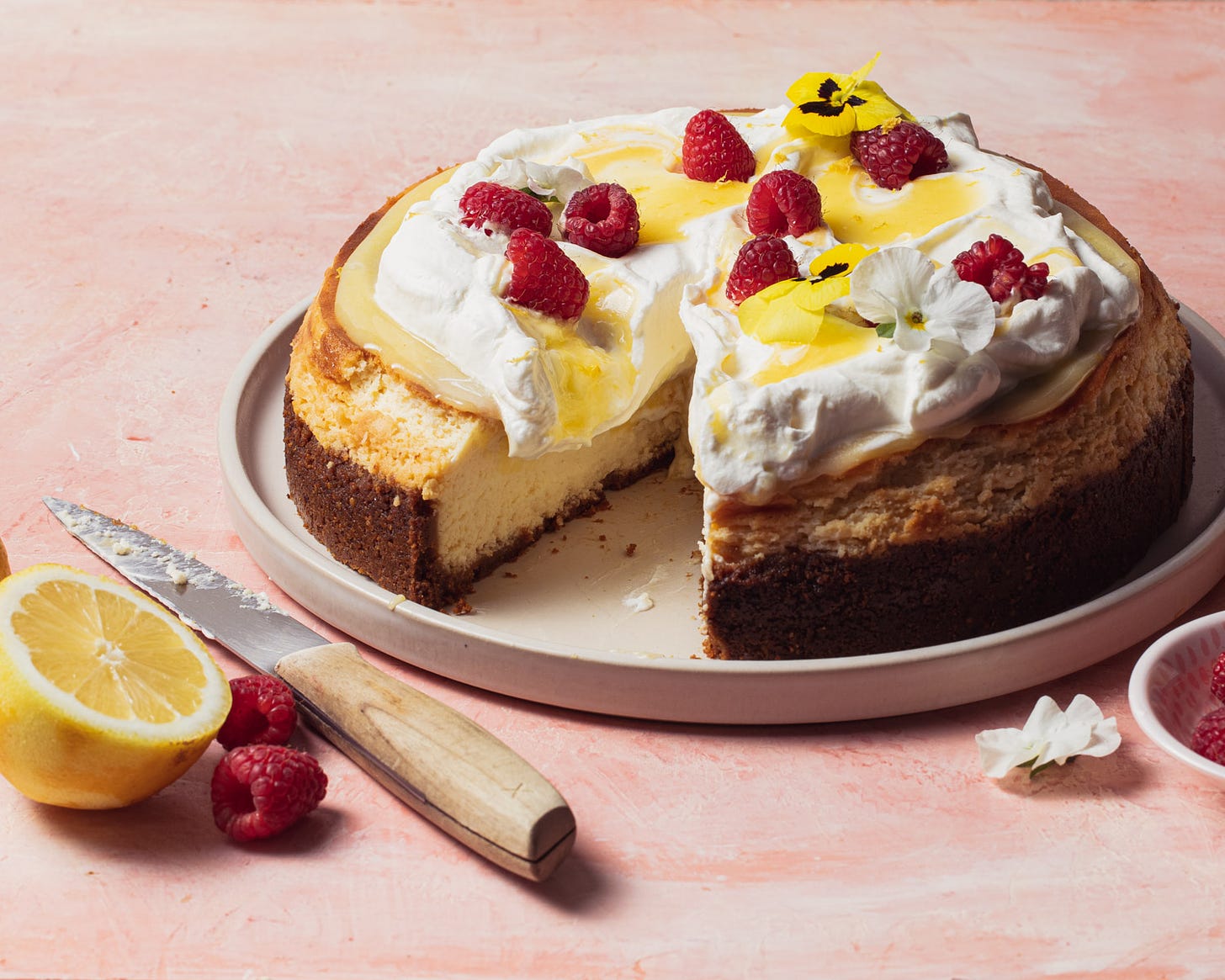Hi Bakers!
Happy Spring! Easter is very early this year, and I wanted to make a celebratory showstopper. This Lemon Cheesecake with Biscoff Pistachio Crust fits the bill. For anyone honoring the special day this weekend or those that just love luscious lemon desserts, please enjoy this creamy, punchy, vibrant kick-off to Spring.
What’s there to say about cheesecake? It’s creamy, slightly tangy, and downright luxurious. A tall and proud cheesecake is no simple task, but I’ve got some expert tips for baking a no-crack, creamy cheesecake every time.
Tips for Making the Best Cheesecake
Mixing:
Start with softened cream cheese. This is your best defense against lumps. To speed up the process, unbox and unwrap the blocks of cream cheese and set out on a plate as you make the crust and prepare the other ingredients.
Mix the cream cheese and sugar longer than you think. This is the only chance you really get to work out any lumps. Mix for at least 5 minutes, stopping two or three times to scrape down the bottom of the bowl as well as the paddle attachment.
Mix the eggs on low speed. Do not spend too much time once the eggs are added and keep the mixer on low. You want to prevent any additional air from whipping up the eggs.
Baking:
Bake with steam. I am not a fan of water baths. There are always leaks. Instead, I prefer to put a large baking pan in the bottom of the oven filled with boiling water. Please be careful! Instead of carrying a pan of boiling water and trying to put it in the oven, put the empty pan in the oven first then carefully pour in your water.
Do not open the oven door. Keep the door closed until the 1 hour mark. Then you can start checking for doneness.
Do not overbake. Knowing when the cheesecake is done baking is probably the most important step to baking a great cheesecake. This recipe should take 60 to 70 minutes. When done, the edges should be puffed up slightly and center wobbly. Gently give the pan a shake. There should be some movement in the middle. If it is super jiggly or looks like waves of batter, then it is not done yet. An overbaked cheesecake will still taste good but will be grainy.
Cooling:
Cool in 3 parts. To prevent cracks, you want to gradually cool the cheesecake down. If possible, cool the cake in the oven (turned off) with the door cracked open for 30 minutes. From there, cool for another 30 minutes at room temperature. Finally, place the cheesecake in the refrigerator for at least 2 hours or overnight.
Cover the cracks. If it cracks, oh well! Most of the time we will be covering the top, so don’t worry about it.
Keep reading with a 7-day free trial
Subscribe to Tessa Huff's Bake Club to keep reading this post and get 7 days of free access to the full post archives.






